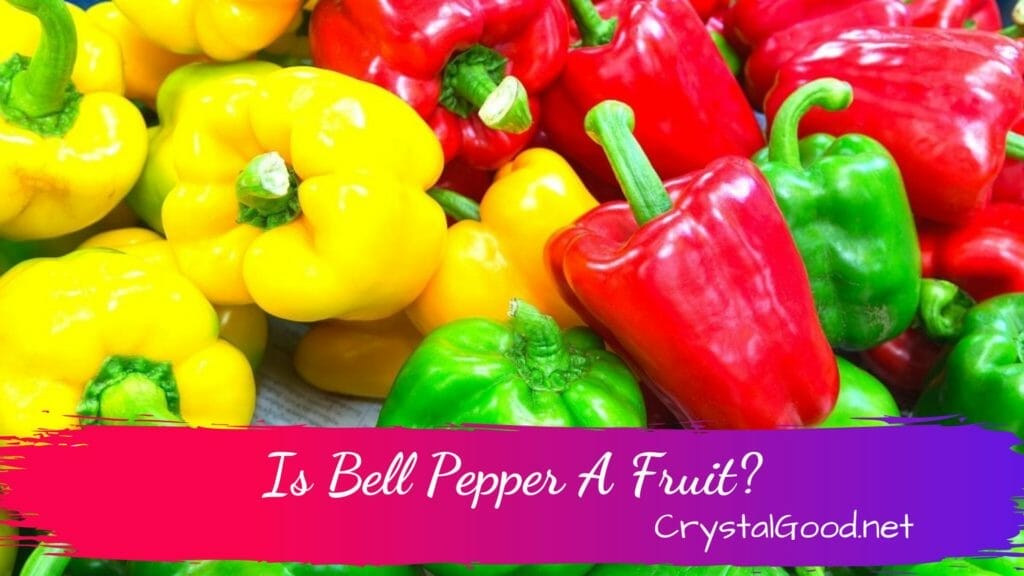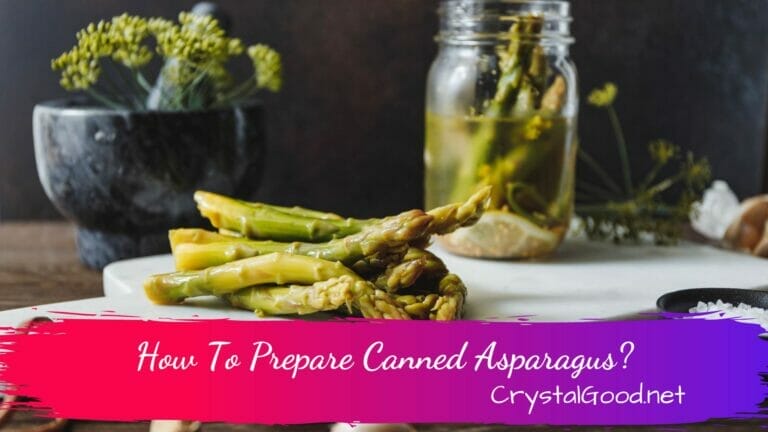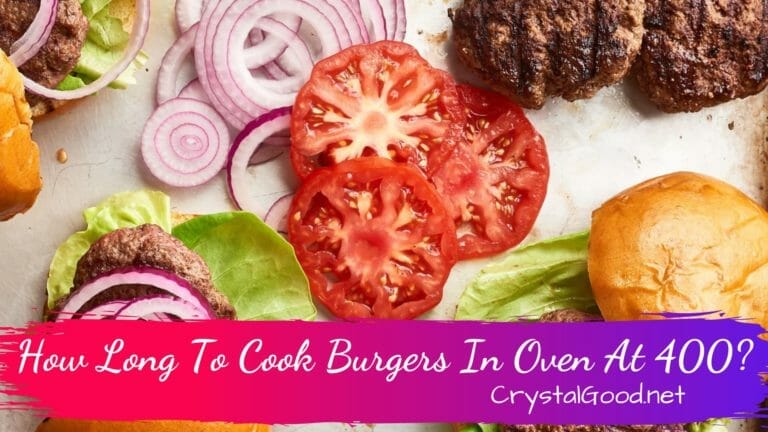The debate over whether bell peppers are fruits or vegetables is a long-standing one. Some people say that since they grow on plants and are used in savory dishes, bell peppers must be vegetables. But others argue that because bell peppers contain seeds and their sweetness contrasts with the bitterness of most vegetables, bell peppers must be considered fruits. So, what is the answer? Are bell peppers fruits or vegetables? Read on to find out!

What are the health benefits of bell peppers?
Contents
- 1 What are the health benefits of bell peppers?
- 2 What are the nutritional values of bell peppers?
- 3 Red Vs Green Vs Yellow bell peppers:
- 4 Is Bell Pepper A Fruit?
- 5 Can you eat bell pepper skin?
- 6 What do bell peppers taste like?
- 7 How do you store bell peppers?
- 8 Watch Green, Yellow, Orange, & Red Bell Peppers Video:
- 9 Conclusion:
Known for its sweet flavor and versatility, bell peppers are a nutrient-rich food that can help you lead a healthier lifestyle. They contain a variety of vitamins and minerals that are essential for your health. They also provide anti-inflammatory phytonutrients that may help fight certain types of cancer.
Bell peppers are an excellent source of vitamin C. This antioxidant is essential for your immune system, collagen formation, and protecting your cells from free radicals. It also supports healthy bones, teeth, and skin. It can also help prevent heart disease and cancer.
Another important vitamin found in bell peppers is folate. Folate helps the development of the fetus, promotes healthy pregnancy, and prevents birth defects. It also helps the body produce melatonin, a hormone that helps promote rest and sleep.
Bell peppers are also an excellent source of fiber. Fiber helps keep you full and reduces your risk of hemorrhoids and constipation. It can also help you lose weight.
A cup of chopped bell peppers provides more than 100 percent of the daily recommended allowance of vitamin C. Vitamin C is also an antioxidant that can help protect your cells from damage.
What are the nutritional values of bell peppers?
Besides being delicious and adding a splash of color to any dish, bell peppers also provide an excellent source of vitamins and minerals. These nutritious vegetables are a rich source of lycopene, vitamin C, iron and potassium. They are also high in carotenoids, flavonoids, and phytonutrients. They are a low-calorie, low-fat, low-sugar food that is a great choice for a nutrient-rich meal.
In addition to vitamin C, red bell peppers contain lycopene, which is one of the most potent antioxidants in the food chain. Lycopene may have powerful antioxidant effects that may protect against chronic disease, including cardiovascular disease. It is also a potential protective factor against eye disorders, such as cataracts and macular degeneration.
Bell peppers are also a good source of fiber and potassium. These nutrients help to support a healthy digestive system. Potassium is also known to have a positive effect on heart health.
Vitamin C is a key nutrient that plays a crucial role in the human immune system. It also helps the body absorb iron and is important for healing.
Red Vs Green Vs Yellow bell peppers:
Whether you’re a novice cook or a pro chef, you’ve probably wondered what the difference is between red vs green vs yellow bell peppers. Each variety offers a different level of nutritional value. It all depends on what you’re looking for in a pepper, and which variety is right for you.
Red bell peppers are the sweetest, but they’re also the most expensive. Generally, green bell peppers are more affordable, as they require less care. In addition, they can be harvested earlier. However, they’re more perishable and contain less nutritional value. Green bell peppers can be a bit bitter, so they can balance rich flavors in dishes.
Red bell peppers are more expensive than green peppers because of the additional time it takes for the peppers to mature. They also contain more beta carotene, lycopene, and zeaxanthin. Red peppers also contain more vitamins A, B6, C, and E.
Green bell peppers are a bit more bitter than red ones, and they tend to be less sweet. Yellow bell peppers are a middle of the road. They’re not quite as sweet as red bell peppers, but they’re still pretty tasty.
Is Bell Pepper A Fruit?
Often, when we think of a bell pepper, we think of it as a fruit. But in actuality, it is a vegetable. Fortunately, it is a healthy fruit that is loaded with vitamins, minerals, and phytochemicals that help improve overall health.
Bell peppers are part of the nightshade family. They contain phytochemicals that help prevent cancer and have antimicrobial properties. They are also rich in fiber and potassium. These are important nutrients for your digestive system and immune system.
Bell peppers can be eaten raw or cooked. They are often prepared in soups and salads. They are rich in vitamin C, which is important for your immune system. Bell peppers are a good source of folic acid. This is important for pregnant women.
They also contain carotenoids, which are compounds found in the vitamin A family. These antioxidants are found in red, orange, and yellow toned bell peppers.
Some bell peppers are even sweet. Red bell peppers are particularly sweet. Yellow and orange peppers are also delicious.
Generally, bell peppers have a crunchy texture. Some are sweet and some are spicy. Bell peppers are available in a rainbow of colors. They are also available in a variety of sizes. Generally, they are sold loose or pre-packed in plastic bags.
Can you eat bell pepper skin?
Whether you like it hot or mild, bell peppers are a tasty way to spice up your salads. They are a rich source of vitamin C, fiber, potassium, and folate. They are also a good source of phytonutrients with powerful antioxidants.
Vitamin C helps the body produce energy and protects your body from free radical damage. It also plays an important role in making collagen, which is essential for healthy bones, tissues, and organs. In addition, vitamin C also helps the body absorb iron.
Potassium is another essential mineral, and it regulates fluid inside cells. It also regulates intestinal peristalsis, which helps the body remove waste. It may also improve heart health.
Bell peppers also contain antioxidants, which can help protect your body from free radical damage. They also contain vitamin E, which is essential for healthy nerves and muscles. This antioxidant can also help reduce metabolic syndrome, which includes high blood pressure and abdominal obesity.
In addition, bell peppers contain anthocyanins, which are responsible for the colors in the peppers. This pigment helps protect the macula of the eye from oxygen-related damage. It’s also a good source of vitamin K1, which is important for bone health.
What do bell peppers taste like?
Whether you love them or hate them, bell peppers are definitely a culinary treat! They are also an excellent source of vitamins A, B, C and K. You can also use them in salads or sauces. They are also a tasty addition to your next pizza.
Although the taste of bell peppers varies from one to another, you can expect them to be juicy and crunchy. The most recognizable variety is the green bell pepper. However, you will find that they are available in a wide range of colors and ripeness levels. The hottest and least sweet bell pepper is the green bell pepper.
The spiciness of bell peppers is due to capsaicin, a compound present in the inner membranes of the pepper. This compound stimulates your GI system more than normal and produces a burning sensation on the tongue. However, if you are not a fan of hot peppers, you may want to try some of the milder varieties.
Bell peppers can be eaten raw, roasted or sautéed. They can also be added to sauces and stir-frys.
How do you store bell peppers?
Whether you’re storing bell peppers for cooking or eating, you should follow a few simple steps. These tips will help you ensure that your bell peppers stay fresh for as long as possible.
The first step is to wash your bell peppers. Make sure to remove the stems from your peppers, and then rinse the bell peppers in cold water. You should also remove the seeds, membrane, and core.
The next step is to cut the peppers into small pieces. Depending on the size of the peppers, you can either cut them into strips or half them. Once you’ve cut them, place them in an airtight container. You can also place them on a baking sheet and put them in the freezer. The freezer will help keep the peppers fresher for a longer time.
If you’re storing bell peppers for eating, you can use paper towel to absorb excess moisture. The paper towel will also help keep the peppers fresher for longer. You can also place the peppers in a crisper drawer in your refrigerator.
Watch Green, Yellow, Orange, & Red Bell Peppers Video:
How to tell the difference between green, yellow, orange, and red bell peppers? by watching this video! You’ll learn about the different characteristics of each color pepper and how to select the best one for your needs.
Conclusion:
Using the scientific method to glean information from the natural world, a brief search of the literature found that peppers are not a new thing. The top five bell pepper producing countries include Mexico, China, Indonesia, India, and Turkey. Bell pepper production occurs in all corners of the globe, but the U.S. ranks fifth in total production.
The most notable thing about peppers is their plethora of varieties. They come in colors as varied as red, yellow, orange, and green. The bell pepper is also an edible plant. The fruit possesses a fleshy interior and tiny seeds that ripen into a tasty morsel. The fruit is also a source of Vitamin C and lycopene, two antioxidants that contribute to their tasty appeal. Bell peppers are also a tad sweet, albeit in moderation.
There are a handful of bell pepper-related missteps, however. For instance, some botanists are under the impression that peppers are a vegetable. The truth is that they are a botanical fruit that bears a seed. While some may think that peppers are a weed, they are actually members of the Solanaceae family, including cucumbers, tomatoes, and olives.













